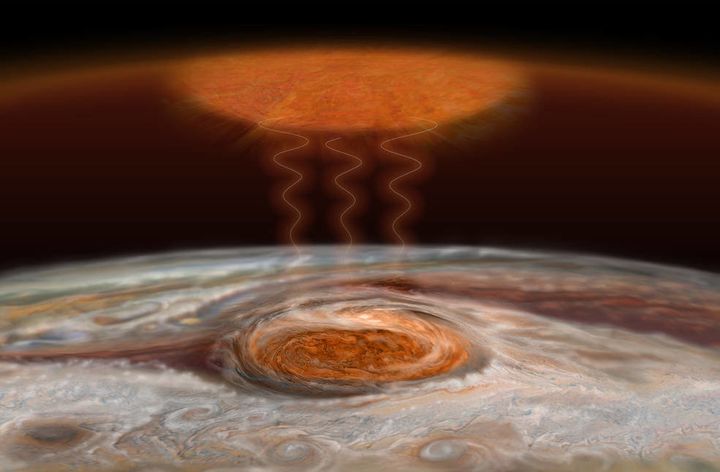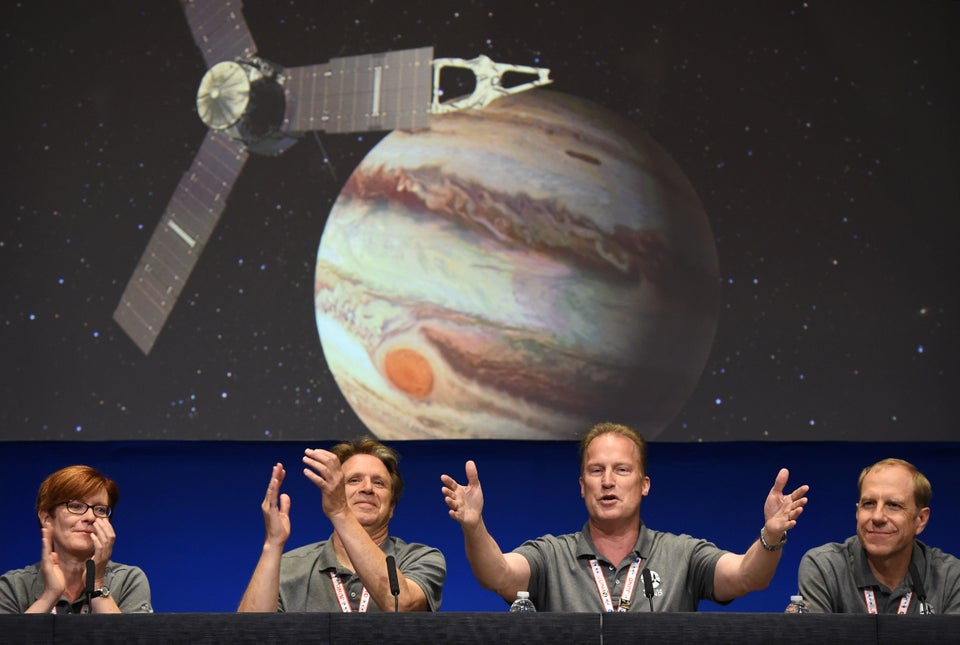For years, scientists have struggled to explain why the temperatures of Jupiter’s upper atmosphere are comparable to those found at Earth.
They should be significantly lower, given that the gas giant is five times further from the sun.
But, researchers from Boston University (BU) appear to have come up with an answer.
The scientists believe that the planet’s infamous Great Red Spot, a hurricane three times larger than Earth, pumps out heat into its atmosphere.
To identify the elusive heat source, astronomers designed observations to monitor the infra-red light 500 miles higher than the planet’s rim.
The team was searching for anomalies when they registered a high altitude temperature at certain latitudes and longitudes in the planet’s southern hemisphere.
Dr. James O’Donoghue, research scientist at BU, and lead author of the study, said: “We could see almost immediately that our maximum temperatures at high altitudes were above the Great Red Spot far below ― a weird coincidence or a major clue?”
The Great Red Spot produces two types of turbulent energy waves that collide and heat the upper atmosphere, the study concluded. Waves of gravity clash with acoustic waves, according to the research.

Jupiter’s Great Red Spot is one of the most curious features of our solar system.
It was discovered just years after Galileo invented telescopic astronomy in the 17th century and is believed to be a perpetual hurricane. Winds within the storm take six days to complete one spin.
Energy transfer to the upper atmosphere from below has been simulated for planetary atmospheres, but not yet backed up by observations,” O’Donoghue said. “The extremely high temperatures observed above the storm appear to be the ‘smoking gun’ of this energy transfer, indicating that planet-wide heating is a plausible explanation for the ‘energy crisis.’ “
The discovery has implications for gas planet within and outside our solar system. Saturn, Uranus and Neptune all have unusually hot atmospheres.
The research was published in Nature.
Meet Jupiter
Jupiter is a giant ball of gas that’s 11 times wider than Earth and some 300 times more massive.
It takes 12 years for Jupiter to orbit the sun and yet rotates so quickly that a single day lasts just 10 hours.
In many ways Jupiter has its own small solar system. Its composition is very similar to that of a star: hydrogen and helium, while its sheer size means that it has four large moons (Io, Europa, Ganymede and Callisto) and over 60 smaller objects known to be in orbit.
While you can’t normally see them, Jupiter also has a huge system of rings much like Saturn.

